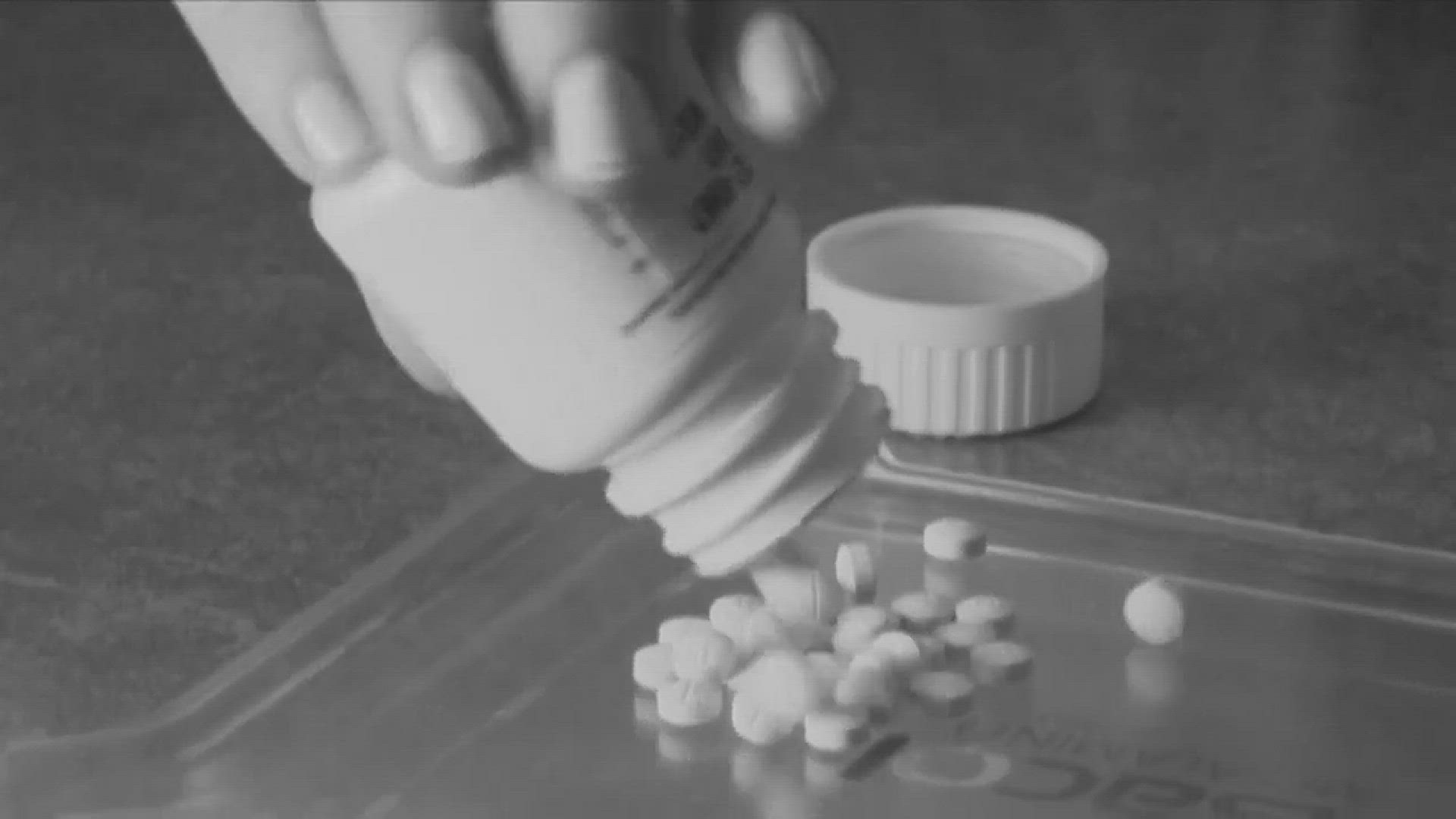Monica Forbes' battle with opioid addiction started with a simple trip to the doctor. The married mother of two daughters began experiencing nerve pain, and was given a basic prescription for painkillers.
She soon found that first prescription wasn't enough.
“I built up a tolerance to the first ones and started going to the next level, and next level, to the point where I’m going to a pain clinic and I’m on methadone," said Forbes.
After a while, methadone wasn't enough either. She was going through her 30-day supply in 10 days.
"I didn't know I was an addict, I knew I had a dependence on them, but nobody ever sat down and said, 'Monica I think you have a problem,'" she said.
But Forbes’ legal prescription had become a problem.
"There were two times that I overdosed on it," she said. "I was supposed to take one, I took eight and I’m so high that I don't remember I took eight of them, so I take eight more and I don't remember two days of my life."
Opioids fully controlled her life.
"You need this, you need this just as much as you need to drink water or eat food," she said.
Forbes even committed a financial crime to pay for her addiction. That crime cost her five years of her freedom.
DEA agent William Lutz says stories like Forbes’ are all too common. People who become addicted to prescription medicine turn to the streets for more pills when they run out.
"There is a pendulum effect that we start with opiates, they become more expensive or if your source of supply dries up, there is a natural tendency to move toward heroin," said Lutz.
Opioid drugs like heroin are now competing with meth as the street drug of choice in Idaho.
RELATED: Meth addiction still plagues Idaho
According to data collected by the Idaho State Police, heroin seizures have grown by more than five times since 2011. The number of heroin-related deaths in Idaho between 2010 and 2014 has also grown by more than 1,000 percent.
The root of the problem is often not hard to trace.
"Pain became that fifth vital sign a number of years ago," Lutz said. "It's kind of changed the way doctors are practicing medicine."
Although prescribed legally, the DEA and their partners at the FBI say the overuse of opioid prescriptions to treat pain has helped quickly grow the problem.
In an effort to fight that trend, law enforcement is cracking down on doctors who prescribe opioids when they shouldn't.
"Just last year we had the Michael Minas case," Lutz said. "He was a doctor in Eagle who was charged with quite a few counts of prescribing without medical necessity. It went to a trial and he was convicted and sentenced."
Lutz says addressing the problem means going to the root.
"We do try to educate, we do try to help, but we also try and investigate doctors that are outside the norm of what medical practices prescribes,” he said.
And that means creating a cultural change
"Doctors are starting to realize that I need to take care of my patients and I need to help them out, but I also have to practice good medicine and make sure I’m within the guidelines," said Lutz.
Treasure Valley pain specialist Dr. Monte Moore says doctors also recognize the need for change.
"I think there has probably been in the past few years a tendency to overprescribe, and I really see that turning around," Moore said. "Most of my colleagues are very reticent to prescribe too much."
According to Moore, the problem partially stems from what doctors were told in the 1990s.
"15-20 years ago when I was going away to big conferences, the big pharmaceutical companies had these presentations where they said there is no ceiling to the amount of medication you prescribe," Moore explained.
In 2015, there were more than 50,000 drug overdoses in the U.S. Dr. Moore says that number is alarming, but doctors are focused on another statistic.
"Narcotics, opiate narcotics that are prescribed by a medical provider are involved with about two-thirds of those overdoses," he said.
Those numbers are forcing doctors to give patients an unwanted message.
"Pain is our companion throughout life, it's neither good or bad, it's just there," Moore said. "We all have pain especially as we get older and not all pain needs to be treated. A lot of pain can just be accepted and we can adapt our life to it.”
Moore says there are legitimate uses for opioids, but that there is a fine line.
"It's like fire," he explained. "Fire can have a good purpose and it also can get out of control, and so if you are going to use fire, you need to make sure you take certain precautions."
Taking those precautions is what Dr. Moore says will help prevent stories like Monica Forbes'.
Since serving her prison sentence, Forbes is 12 and a half years clean. She now runs several substance abuse recovery centers across the Treasure Valley. Her goal is to simply help save lives.
"I’m going to do everything I can to help people that need [it]," she said. "It's my passion, and it’s my purpose. I believe it's the reason I didn't die."

